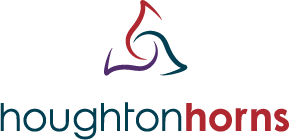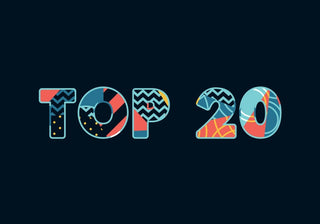(in alphabetical order)
H. Leslie Adams, Sonata for Horn and Piano (aka Empire Sonata): Dr. Adams studied at Oberlin Conservatory, earning his Bachelor’s and Masters in music and Ph.D. in Music Education. Written in four movements, this sonata is in standard form, with a unique harmonic language that is sure to capture the audience’s attention.
Kenneth Amis, Preludes No. 1-5 for French Horn and Piano: Currently the tuba player of the Empire Brass, Kenneth Amis’ music has been performed around the world by groups including the Shanghai Symphony Orchestra, Indianapolis Symphony Orchestra, and the Royal Academy of Music Symphonic Winds, among others. These five preludes showcase the beautiful sound of the horn and capture the character of a prelude, often played as an introduction to a larger work.
Ludwig van Beethoven, Sonata for Horn and Piano in F Major, Op. 17: A standard sonata in the horn repertoire representing Beethoven’s classical style that transitioned us into the Romantic Period. This is the only sonata for a wind or brass instrument Beethoven wrote. It was premiered by Beethoven himself on piano and Giovanni Punto (also known as Johann Stitch) on horn. (Purchase Link)
Eugene Bozza, En Foret: Indicative of post-Romantic Impressionism, this work for horn was written as a test piece for graduate students at the renowned Paris Conservatory. Frequent horn calls are heard, reminding us of the horn’s roots in hunting. (Purchase Link)
Paul Dukas, Villanelle for Horn and Piano: An important standard that will help you understand the natural horn. Dukas wrote this as an exam piece for the students at the Paris Conservatory in 1906. (Purchase Link)
Reinhold Gliere, Four Pieces for Horn and Piano, Op. 35: These pieces allow you to sing through the instrument and show off your expressiveness. Gliere was a first-generation Soviet composer whose career spans the gap between the Romantic and Contemporary Periods. Unlike many of his peers, his music pleased Stalin, which allowed him to have a successful career.
Bernhard Krol, Laudatio: This is an unaccompanied work for horn from the 20th century. A popular choice for competitions, this solo allows for interpretive choices in regard to musical aspects such tempi and rubato. It’s always a good idea to have an unaccompanied work on hand! (Purchase Link)
Catherine Likhuta, Vivid Dreams: An Australia-based composer, Dr. Likhuta’s music is programmatic and rhythmically complex. Vivid Dreams is a work for low horn and piano and was commission by Denise Tryon in 2018. Since this is specifically written for low horn, it’s a great work to have in your library to show off that low range! (Purchase Link)
Wolfgang Amadeus Mozart, Four Horn Concertos and Concert Rondo: Mozart horn concertos are some of our most popular pieces! Since they’re often asked for in professional auditions, it’s a good idea to have a Mozart concerto ready to play on a moment’s notice. Horn players are fortunate—Mozart wrote us 4 concertos and 1 concert rondo during the peak of his compositional career. (Purchase Link)
Thea Musgrave, Music for Horn and Piano: Thea Musgrave, born 1928, is a Scottish-American composer who studied with Nadia Boulanger for four years while at the Paris Conservatory. Her compositional style often includes dramatic-abstract works, without any programmatic context. (Purchase Link)
Usamah Mustafa, Evening Reveries for Horn & Piano: Dr. Mustafa’s music is influenced by movie scores, and John Williams and Howard Shore are favorite composers of his. This work is a beautiful work to have in your library and is representative of 21st century music that audiences love. (Email composer here to purchase a copy.)
James Naigus, Episodes: Dr. Naigus is well-known for his many works for horn. This piece has seven distinct movements and is very exciting for the listener as well as player. A 21st century work, Dr. Naigus’ music remains tonal and approachable to listeners. His pieces vary in difficulty for the horn player, giving you options for different needs. (Purchase Link)
Vincent Persichetti: Parable VIII for Solo Horn, Op. 120: Persichetti is one of the leading American composers of the 20th century. An unaccompanied work, this piece requires an understanding of musical nuance and detail. (Purchase Link)
Vissarion Shebalin, Horn Concertino, Op. 14, No. 2: Shebalin was a Soviet composer and was a victim of “The Purge,” hence his horn concertino being a lesser-known work. He was best friends with Shostakovich and spoke out on his behalf numerous times to the detriment of his own career. Concertino No. 2 is a riveting work for horn, with an exciting 3rd movement ending. (Order from his publisher at this link.)
Richard Strauss, Horn Concerto No. 1 in E-flat Major. Op. 11: Another horn concerto standard! This is a piece you will be asked to play throughout your career. Richard’s father, Franz (who also wrote for horn) was a horn player — so you can be sure this piece is idiomatic for the horn. (Purchase Link)
Justinian Tamusuza, Okukoowoola Kw’Ekkondeere (Horn Call): This piece was premiered at the 2006 International Horn Symposium in Cape Town, South Africa. An unaccompanied solo, it features extended techniques, including note bends, quartertones, harmonics (played with tuning slides removed), and more. A fun piece to prepare, this is a great addition to a recital and is enjoyable for audiences. (Purchase Link)
Listen to James Boldin’s performance here.
Georg Philipp Telemann, Concerto in D for Solo Horn, TWV 51:D8: Telemann was a German Baroque composer who was actually better known in the period than his famous contemporary J.S. Bach (who also wrote some great music for horn – Brandenburg Concerto No. 1 comes to mind as one of the primary works modern performers prefer to play on a descant horn). While much of our solo literature comes from the Romantic period, Telemann’s concerto is a reminder of the incredible Baroque works for horn. (Purchase Link)
Jane Vignery, Sonata for Horn, Op. 7: A hauntingly beautiful work, Belgian composer Vignery wrote this in 1942 for the Ghentian horn teacher Maurice Van Bocxstaele. The three movements are in traditional forms, but she uses an impressionistic harmonic language. (Order from the publisher at this link.)
Deborah Thurlow, Woods: Thurlow studied composition with John Corigliano. This work, for horn, violin, electric guitar, and theremin, embodies the experimental aspects of modern composition. Looking for a change of pace? This is a great piece to dive into experimental music. Listen closely – you might even hear some quotations from your favorite orchestral horn excerpts!
Frederick C. Tillis, Spiritual Fantasy No. 5 for Horn and Piano: An American composer, Dr. Tillis drew inspiration from composers like Bach, Schoenberg, and composers of world music. He started out as a Galveston, Texas band student, and retired after an illustrious career with the title of Professor Emeritus in the Department of Music and Dance at the University of Massachusetts Amherst. This work, written in 1982, features a muted section and an extended cadenza “quasi recitative.” (Purchase Link)


Anonymous
Hi Alina, great idea! I’ve added it to our list of potential future blog topics. Thanks!
Alina
Thank you for this article! I think it’s hard to find new repertoire, especially that of the 21st century. I would love to see an article based on 21st-century rep. (Not sure if ya’ll have one but if you already have one, please send it my way.)